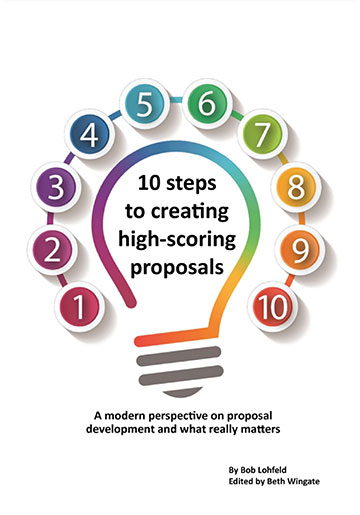How to Survive and Thrive Under FAR Part 18 Changes

This is one in a series of articles on the impact of the Revolutionary Federal Acquisition Regulation (FAR) Overhaul (RFO) by Bruce Feldman and Jacob Bertram. In this article, we focus on changes to FAR Part 18, specifically regarding Emergency Acquisitions. It identifies the opportunities and risks that industry growth teams and acquisition professionals face as a result of FAR 2.0 acquisition policy changes. If you would like more information concerning how to address FAR changes, contact Lohfeld Consulting.
Introduction to FAR 2.0
On May 6, 2025, the Office of Management and Budget (OMB) launched FAR 2.0, with the stated intent of cutting red tape and making it easier for agencies to buy mission-aligned solutions. The FAR 2.0 changes are being implemented initially as FAR deviation guidance, with formal approvals planned for late FY25 and beyond.
For Part 18, FAR 2.0 modernizes the management of the text content by:
- Making greater, more precise use of internal cross-referencing (e.g., hyperlinks)
- Removing or relocating content that is not based on statute to nonbinding federal “buyer guides” or online resources
Overview of FAR Part 18’s Evolution
FAR Part 18 wasn’t part of the original 1984 FAR; it was added in 2008[1] following 9/11 and Hurricane Katrina[2]. Its purpose was to give contracting officers a quick-reference guide to flexibilities they could use in emergencies, contingencies, or urgent needs.
For industry, FAR Part 18 historically offered insight into:
- Conditions for waivers of certain requirements
- Higher thresholds for simplified acquisition
- Opportunities for accelerated or sole-source awards
This transparency helps companies prepare better solutions for crisis conditions and partner effectively with government buyers.
How FAR 2.0 Changes FAR Part 18
The RFO revisions to FAR Part 18 don’t fundamentally change the authorities contracting officers can use. Instead, the revisions modernize and streamline how authorities are managed and presented—an overarching objective of FAR 2.0.
Key changes to FAR Part 18 listed in Table 1 below include:
- Consolidation of Flexibilities: Specific procedures previously listed in Part 18 have been removed from the text and are now accessed via hyperlinks or references to other FAR parts.
- Introduction of the Emergency Procurement List (EPL): The EPL is a centralized online resource that lists all available FAR emergency flexibilities with links to their authoritative sources.
- Improved Traceability: By referencing other FAR parts directly, Part 18 reduces redundancy and ensures contracting officers always have access to the correct, current version of a particular flexibility.
Table 1. Summary of Significant FAR Part 18 Revisions
| Title and Reference | Description of Change | Significance and Impact |
| Consolidation of Flexibilities and Removal of Specific Procedures (§ 18.001(a)) | Specific flexibilities and procedures were removed from FAR Part 18 and are now referenced via a web link or other FAR parts. See Table 2 for specifics. | Industry needs to remain aware that emergency flexibilities remain elsewhere in the FAR. |
| Increased Visibility of Threshold Increases (§ 18.001(b)) | Micro-purchase and simplified acquisition thresholds are more visible, but it’s unclear if this is intentional or merely a byproduct of other content being removed. | Understanding threshold adjustments can help teams tailor solutions to fit streamlined procedures in emergencies. |
The following provides an example of how the consolidation and streamlining of the FAR revision is implemented:
Original FAR 18.105: “Federal Supply Schedules (FSSs), multi-agency blanket purchase agreements (BPAs), and multi-agency indefinite delivery contracts. Streamlined procedures and a broad range of goods and services may be available under Federal Supply Schedule contracts (see subpart 8.4), multi-agency BPAs (see 8.405-3(a)(6)), or multi-agency, indefinite delivery contracts (see 16.505(a)(8)). These contracting methods may offer agency advance planning, pre-negotiated line items, and special terms and conditions that permit rapid response.”
Revised FAR 18.001(a) simply instructs contracting officers to use the flexibilities included in the FAR and points them to the Emergency Procurement List[3] for the full, current details.
Table 2 shows the traceability of the revisions to FAR Part 18.1 – Available Acquisition Facilities. All of the items removed from § 18.1 are now identified by their presence in the EPL; therefore, the concepts remain in the FAR, but the actual text of the authorities is now provided in a single location, the EPL.
Table 2: Traceability of FAR Part 18 Revisions
| Removed from Original FAR | FAR Revisions Link to EPL |
| § 18.102(a) SAM Registration Waivers | EPL Item (1) w/ref to 4.1102 |
| § 18.102(c) Disaster Response Registry | EPL Item 2 w/ref to 26.205 |
| § 18.103 Synopsis Exemptions | EPL Item 3 w/ref to 5.202(a)(2) |
| § 18.104 Unusual and Compelling Urgency | EPL Item 4 w/ref to 6.302-2 |
| § 18.105 Federal Supply Schedules (FSSs), Multi-Agency Blanket Purchase Agreements (BPAs), and Multi-Agency Indefinite Delivery Contracts | EPL Item 5 w/ref to 8.4 and 16.5 |
| § 18.106 Acquisitions from Federal Prison Industries, Inc. (FPI) | EPL Item 6 w/ref to 8.605(b) |
| § 18.107 AbilityOne Specification Changes | EPL Item 7 w/ref to 8.712(d) |
| § 18.108 Qualifications Requirements | EPL Item 8 w/ref to 9.206-1 |
| § 18.109 Priorities and Allocations | EPL Item 9 w/ref to subpart 11.6 |
| § 18.110 Soliciting from a Single Source | EPL Item 10 w/ref 13.106-1(b) |
| § 18.111 Oral Requests for Proposals | EPL Item 11 w/ref 15.203(f) |
| § 18.112 Letter Contracts | EPL Item 12 w/ref to 16.603 |
| § 18.113 Interagency Acquisitions | EPL Item 13 w/ref subpart 17.5 |
| § 18.114 Contracting with the Small Business Administration (The 8(a) Program) | EPL Item 14(i) |
| § 18.115 HUBZone Sole Source Awards | EPL Item 14(ii) |
| § 18.116 Service-Disabled Veteran-Owned Small Business (SDVOSB) Sole Source Awards | EPL Item 14(iii) |
| § 18.117 Awards to Economically Disadvantaged Women-Owned Small Business Concerns and Women-Owned Small Business Concerns Eligible Under the Women-Owned Small Business Program | EPL Item 14(iv) |
| § 18.118 Overtime Approvals | EPL Item 15 w/ref to 22.103-4(i) |
| § 18.119 Trade Agreements | EPL Item 16 w/ref to 25.401(a)(5) |
| § 18.121 Bid Guarantees | EPL Item 17 w/ref to 28.101-1(c) |
| § 18.122 Advance Payments | EPL Item 22(i) w/ref to 32.405 |
| § 18.123 Assignment of Claims | EPL Item 18 w/ref to 32.803(d) |
| § 18.124 Electronic Funds Transfer | EPL Item 19 w/ref to 32.1103(e) |
| § 18.125 Protest to GAO | EPL Item 20 w/ref to 33.104(b) and (c) |
| § 18.126 Contractor Rent-Free Use of Government Property | EPL Item 21 w/ref to 45.301 |
| § 18.127 Extraordinary Contractual Actions | EPL Item 22(ii) w/ref to 50.103-2(a); 22(iii) w/ref to 50.103-2(b); 22(iv) w/ref to 50.103-2(c) |
Notable Changes to Emergency Acquisition Authorities in FAR Part 18
- Shift in Organizational Emphasis. The revised text removes descriptions of use cases (e.g., contingencies) and instead focuses on identifying and linking to the actual authorities.
- International Humanitarian and Disaster Assistance. The basis for these authorities shifts from the United Nations Charter[4] to U.S. statute[5]. This change aligns the model for international humanitarian and disaster assistance with the same basis used for domestic assistance. This has the advantage of placing responsibility for authorities exercised by contracting officers squarely within U.S. jurisdiction. The change also reduces the need for extensive inter-agency coordination when operating outside the U.S.
What RFO Changes to FAR Part 18 Mean for GovCon Capture and Proposal Teams
- Understand How Revisions to FAR Part 18 Work. You need to confirm that your business development and contract teams understand that emergency acquisition flexibilities and authorities are largely unchanged and still grounded in FAR Part 18, but the actual text is reached through links to other sections in the FAR.
- Consider Applying Your Expertise in Domestic Humanitarian and Disaster Assistance Internationally. If your company is already familiar with providing assistance under the Robert T. Stafford Disaster Relief and Emergency Assistance Act (42 U.S.C. 5122; 41 U.S.C. 1903), you may be able to extend your business to international assistance. The statutory basis for such assistance is now grounded in U.S. law, which may make your offerings, especially commercial products and services, more attractive for international aid.
Conclusions
The FAR Part 18 revisions have little impact on the meaning and outcomes prescribed by the FAR, nor do they reduce emergency acquisition flexibilities. Instead, they make the system leaner, easier to maintain, and more user-friendly.
For government buyers, the changes mean:
- Immediate access to up-to-date flexibilities
- Clearer documentation trails
- Stronger audit readiness
For industry, the changes provide:
- More consistent expectations across agencies
- Opportunities to support contracting officers in crisis response with well-referenced, compliant proposals
- The chance to leverage domestic experience for international humanitarian work
If you need help applying new FAR regulations to your next capture or proposal, please contact Lohfeld Consulting; our experienced contracting officers and subject matter experts (SMEs) can assist you.
Relevant Information
- How the Revolutionary FAR Overhaul Rewires FAR Part 34
- How the Revolutionary FAR Overhaul (RFO) Modifies FAR Part 10
- Emergency Procurement List (EPL)
By Bruce Feldman and Jacob Bertram
Bruce Feldman, Vice President, Lohfeld Consulting Group. Bruce brings more than 30 years of experience as a subject matter expert (SME) in business development, capture management, and proposal development specializing in Space and National Intelligence programs for the U.S. Air Force (USAF), U.S. Space Force (USSF), Intelligence Community (IC), Office of the Secretary of Defense (OSD), Department of Defense (DOD) 4th Estate, and Combatant Commands. He leads Lohfeld Consulting Group’s Artificial Intelligence (AI) initiatives and is the lead trainer for our Generative AI for Proposal Professionals classes, a trainer for our Capture Management and Strength-Based Winning® classes, as well as a consulting advisor.
Jacob Bertram is a senior leader in the federal procurement industry with over 20 years of experience spanning GSA, the Department of Energy, DCMA, and DCAA. He currently advises Fortune 500 companies, government agencies, and federal contractors on acquisition strategy, pricing, audit readiness, and operational efficiency. Jacob is DAWIA Level III certified in Contracting and a member of the Defense Acquisition Corps.
Lohfeld Consulting Group has proven results specializing in helping companies create winning captures and proposals. As the premier capture and proposal services consulting firm focused exclusively on government markets, we provide expert assistance to government contractors in Capture Planning and Strategy, Proposal Management and Writing, Capture and Proposal Process and Infrastructure, and Training. In the last 3 years, we’ve supported over 550 proposals winning more than $170B for our clients—including the Top 10 government contractors. Lohfeld Consulting Group is your “go-to” capture and proposal source! Start winning by contacting us at www.lohfeldconsulting.com and join us on LinkedIn, Facebook, and YouTube(TM).
SOURCES:
[1] Federal Acquisition Regulation: Federal Acquisition Circular 2005-26—Introduction of FAR Part 18. Federal Register, vol. 73, no. 78, 22 Apr. 2008, pp. 21776–21777. U.S. Government Publishing Office, https://www.federalregister.gov/documents/2008/04/22/E8-8270/federal-acquisition-regulation-federal-acquisition-circular-2005-26-introduction.
[2] United States Government Accountability Office. Hurricane Katrina: GAO’s Preliminary Observations Regarding Preparedness, Response, and Recovery. GAO-06-838T, 9 May 2006, https://www.gao.gov/products/gao-06-838t.
[3] The link to the Emergency Procurement List (EPL) has, as item (5): “The Federal Supply Schedules (FSSs), Blanket Purchase Agreements (BPAs), and Indefinite Delivery Contracts. These pre-established contracts can offer streamlined purchasing, pre-negotiated prices, and terms for rapid responses. (See subparts 8.4 and 16.5).” Notice that the meaning of the content is, effectively, unchanged.
[4] “Humanitarian or peacekeeping operation means a military operation in support of the provision of humanitarian or foreign disaster assistance or in support of a peacekeeping operation under Chapter VI or VII of the Charter of the United Nations.”
[5] (e)Disaster or emergency assistance activities. Award preference will be given to local organizations, firms, and individuals when contracting for major disaster or emergency assistance activities when the President has made a declaration under the Robert T. Stafford Disaster Relief and Emergency Assistance Act (42 U.S.C. 5122; 41 U.S.C. 1903). Preference may take the form of local area set-asides or an evaluation preference. (See part 26.2). [Author’s bold emphasis]
Paperback or Kindle
10 steps to creating high-scoring proposals
by Bob Lohfeld
contributors Edited by Beth Wingate
Subscribe to our free ebrief
Teaming friends, frenemies, and enemies—12 tips to mitigate harmful effects
Did you know that contracting officers spend up to 20% of their time mitigating disputes between teaming partners? In an informal poll we conducted on LinkedIn last month, 40% of respondents classified their teaming partners as “frenemies” on their last bid.
Explore Further
- Advice (539)
- AI (30)
- APMP (18)
- Army MAPS Contracts (3)
- Business Development (294)
- Capture Management (266)
- Complex Technology Grants Services (26)
- Favorite Books (5)
- GenAI (4)
- Go-to-Market (27)
- Graphics (5)
- Lohfeld Books (2)
- NASA SEWP VI Contracts (2)
- Navy SeaPort-NxG Contracts (2)
- NIST MSE Grants (1)
- NIST NAPMP Grants (2)
- Past Performance (63)
- Post-submission Phase (14)
- Pre-RFP Preparation (264)
- Proposal Management (341)
- Proposal Production (77)
- Proposal Reviews (40)
- Proposal Writing (109)
- Pursuit Phase (108)
- Research Report (4)
- Resources (63)
- Tools & Tips (423)
- Training (13)
- Uncategorized (223)

Sign Up for INSIGHTS and Download your FREE book
We'd love to help you with your proposals. Enjoy our complimentary Lohfeld Consulting Group Capture & Proposal Insights & Tips book with your FREE subscription to our Insights Newsletter.
GET YOUR FREE BOOK



